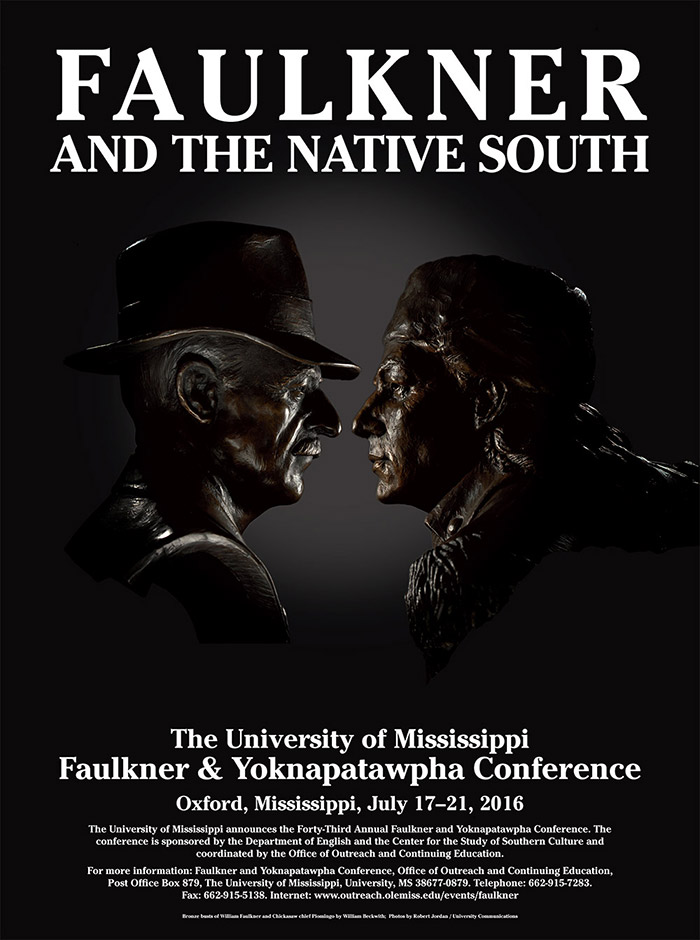
Another Mississippian's Indians: The Missionary Hope, 1886-1909
Location
Nutt Auditorium
Start Date
18-7-2016 1:30 PM
Description
At the age of 36, Bishop Charles Betts Galloway’s first charge when made a Methodist bishop in 1886 was Indian Territory. The bishop lived long enough to overlap with William Faulkner’s first twelve years; his memory stretched back through a father who had served in the Civil War and a grandfather who had held slaves and taken up Indian land; he even graduated from Ole Miss after it reopened. His hope for Indian people was that they would be converted to Christianity, and he saw the Indian people he met as dignified and thoughtful. We have his accounts of visits and meetings; a photograph of of white and Indian pastors sitting with chiefs at a Canadian church meeting that he attended; a pair of well-worn Kiowa moccasins that he collected. Many commentators have spoken of the spirituality Faulkner assigns to Indians. I think it may be helpful to explore this theme through another outsider’s view of Indian spirituality contemporaneous with the middle times of Yoknapatawpha.
Relational Format
Conference proceeding
Recommended Citation
Galloway, Patricia Kay, "Another Mississippian's Indians: The Missionary Hope, 1886-1909" (2016). Faulkner and Yoknapatawpha Conference. 9.
https://egrove.olemiss.edu/fy/2016/schedule/9
Another Mississippian's Indians: The Missionary Hope, 1886-1909
Nutt Auditorium
At the age of 36, Bishop Charles Betts Galloway’s first charge when made a Methodist bishop in 1886 was Indian Territory. The bishop lived long enough to overlap with William Faulkner’s first twelve years; his memory stretched back through a father who had served in the Civil War and a grandfather who had held slaves and taken up Indian land; he even graduated from Ole Miss after it reopened. His hope for Indian people was that they would be converted to Christianity, and he saw the Indian people he met as dignified and thoughtful. We have his accounts of visits and meetings; a photograph of of white and Indian pastors sitting with chiefs at a Canadian church meeting that he attended; a pair of well-worn Kiowa moccasins that he collected. Many commentators have spoken of the spirituality Faulkner assigns to Indians. I think it may be helpful to explore this theme through another outsider’s view of Indian spirituality contemporaneous with the middle times of Yoknapatawpha.

